Myopia (Nearsightedness)
A myopic eye is longer than normal or has a cornea that is too steep, so that the light rays focus in front of the retina. Close objects look clear, but distant objects appear blurred. Myopia is inherited and is often discovered in children when they are between 8 and 12 years old. During the teenage years, when the body grows rapidly, myopia may become worse. Between the ages of 20 and 40, there is usually little change.
If the myopia is mild, it is called low myopia. Severe myopia is known as high myopia. If you have high myopia, you have a higher risk of detached retina. Your ophthalmologist (Eye M.D.) should discuss the warning signs of retinal detachment with you if you are in this risk category. If the retina does detach, a surgical procedure is the only way to repair it. It is important to have regular eye examinations by an ophthalmologist to watch for changes in the retina.
Hyperopia (Farsightedness)
A hyperopic eye is shorter than normal. Light from close objects, such as the page of a book, cannot focus clearly on the retina. Like nearsightedness, farsightedness is usually inherited. Babies and young children tend to be slightly hyperopic. As the eye grows and becomes longer, hyperopia lessens.
Presbyopia (Aging Eyes)
When you are young, the lens in your eye is soft and flexible. The lens of the eye changes its shape easily, allowing you to focus on objects both close and far away. After the age of 40, the lens becomes more rigid. Because the lens can’t change shape as easily as it once did, it is more difficult to read at close range. This normal condition is called presbyopia. You also can have presbyopia in combination with myopia, hyperopia or astigmatism.
Astigmatism
The cornea is the clear front window of the eye. A normal cornea is round and smooth, like a basketball. When you have astigmatism, the cornea curves more in one direction than in the other, like a football. Astigmatism distorts or blurs vision for both near and far objects. It’s almost like looking into a fun house mirror in which you appear too tall, too short, too wide or too thin. It is possible to have astigmatism in combination with myopia or hyperopia.

